Site of MIT's First Women's Dorm - 120 Bay State Road
Introduction
Text-to-speech Audio
120 Bay State Road, MIT’s first women’s dormitory, opened in November 1945 to fourteen women, one housemother, and a part-time cook. With a maximum capacity of seventeen students, the Brownstone would be MIT’s only women’s dormitory until 1963, when McCormick Hall opened with room for 100+ women.
Today 120 Bay State Road is owned by an MIT fraternity, Beta Theta Pi, which purchased the property in March 1964 from MIT.
Images
120 Bay State Road (1945-1964) Exterior
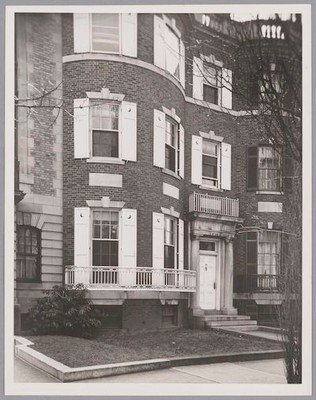
120 Bay State Road, interior, three women in living room
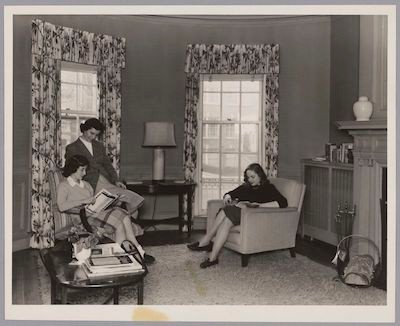
120 Bay State Road, interior, two women in living room
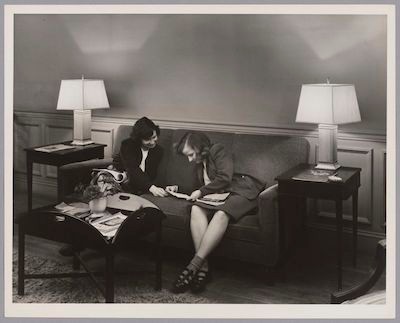
120 Bay State Road living room. Older woman on the right, likely the housemother
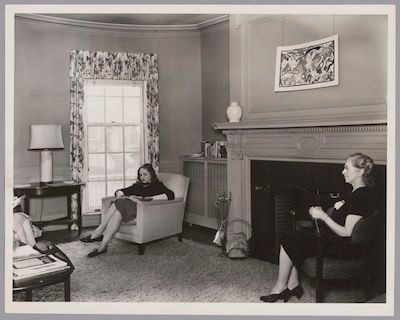
The residents of 120 Bay State Road (no date)
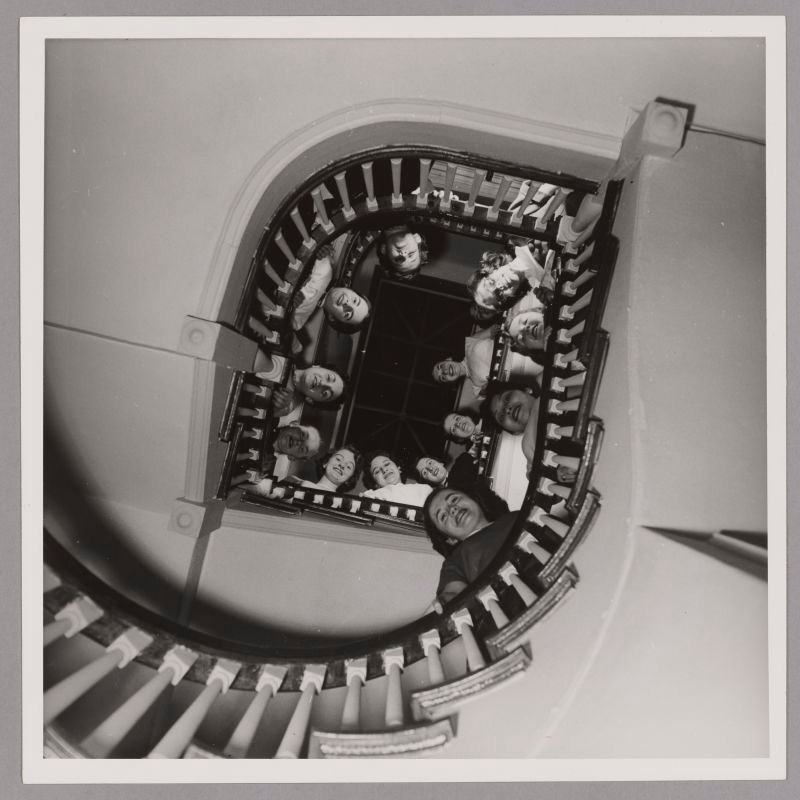
Margaret Hutchinson Compton, circa 1954
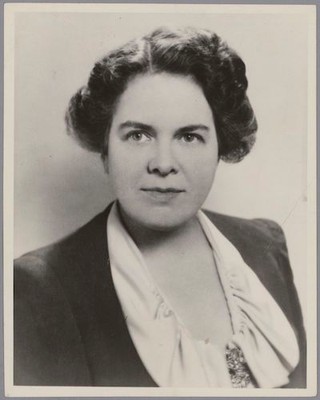
Miss Florence Ward Stiles, who has been appointed adviser to the woman students of the Massachusetts Institute of Technology. She is also librarian of the Arthur Rotch Library of the Institute's School of Architecture
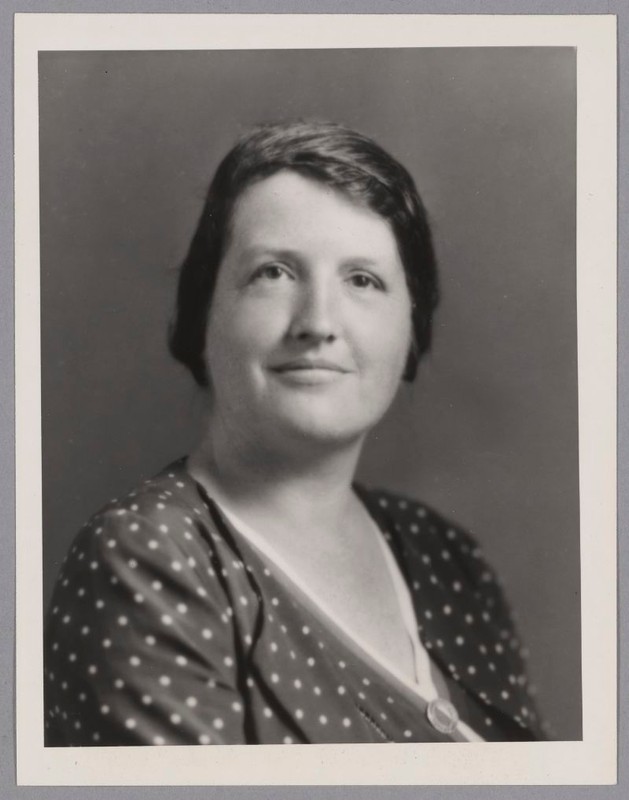
Katharine Moore Dexter McCormick (Sep 3 1946)
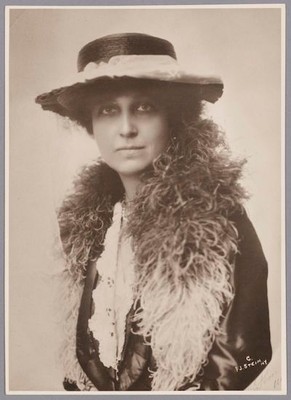
Backstory and Context
Text-to-speech Audio
In 1944 President Karl Compton wrote, “For reasons, some logical and some traditional, technology has been predominantly of interest to the male of the species, but logically and traditionally also, the female of the species continues to display both interest and effectiveness in technological pursuits and this interest is slowly but definitely increasing.” 7 Anticipating an influx of students after the war, MIT looked to expand housing options for all students with three proposals: 1) a traditional dormitory for 200 men, 2) another “Student House” managed by the students, and 3) a dormitory for women students. Florence Stiles (1923, S.B. Architecture), who had been the informal advisor to women students since 1939, hoped a women’s dormitory might “create an ‘esprit du corps’ among female students” and improve retention rates. MIT proposed a large capital project with a budget of approximately $4,000 per student, 25% to be raised through donations, for the men’s dormitory. MIT suggested purchasing (or renting) an older brownstone in Back Bay for the women.
In 1945, with help from Margaret Compton, President Compton’s wife, the MIT Women’s Association (MITWA), Technology Matrons (faculty wives), and Florence Stiles, MIT purchased 120 Bay State Road as a women’s dormitory. Based on the “book value” of the property, MIT spent $857 per student, less than the proposed budget for the men’s dormitory. The attitude toward appropriate student supervision differed, as well. For the proposed men’s dorm, overseen by the Dean of Students, “There should be attached to it some younger member of the staff, perhaps with his family, as "guide, philosopher and friend" to the residents.”7 For the women’s dormitory, overseen by an Advisory Board comprised of alumnae, faculty, and faculty wives, “There should be a house mistress, preferably a professional woman. She could provide advice and appropriate chaperonage to the occupants of the house.” Judith Perrolle (1966 S.B. Humanities & Science), who lived at 120 Bay State Road during her first year, elaborates, “It was very paternalistic. They locked the doors at eleven. [...] They did not do that for the guys, but the women had to be in at eleven. If you came in after eleven you were locked out.”4
Oral Histories indicate that women who did not live at 120 Bay State Road commuted from home, rented apartments, or found space in women’s dormitories at the Berkley School of Music, Boston University, or the Katherine Gibbs School. In a 1952 memorandum to President James Killian and Chancellor Julius Stratton, Dean of Students Francis Bowditch wrote, “The present Women’s Dormitory is inadequate in size (17 girls) and is too far from the Institute. It is the opinion of many that the place, program, and activities of women students has not been adequately worked out and that, in reality, we face one of two alternatives: eliminate women students, at least undergraduates; or decide we really want women students, plan an adequate set-up, and then deliberately go out and get more good girls. Everyone seems to incline to the latter view.”3 From 1954-56, a committee chaired by Professor Hamilton to explore options gathered statistics and concluded women were “not successful undergraduates.” The results conflicted with findings from the MIT Women’s Association (MITWA) 1953 Survey, which demonstrated the success and accomplishments of MIT alumnae. In April 1957, Chancellor Stratton announced, “MIT women were here to stay [, and MIT would] expand and amplify facilities specifically for women as rapidly as means can be found.”5 MIT transferred the administration of the Women’s Dormitory to the Dean of Students, reclassified 120 Bay State Road as a freshman house, and opened Bexley Hall to thirty-three upper-class and graduate women.
By 1959, MIT acknowledged the inadequacy of these efforts: “After two years it seems quite clear that Bexley Hall as presently set up, however convenient and pleasant it may be as apartment living, can in no sense be considered a women's dormitory, for it offers none of the social and educational opportunities we are so eagerly attempting to establish in all our dormitories. [...] It becomes increasingly clear that we should be looking toward a complete residential unit with all that this implies and not a series of makeshift arrangements, as has been the case in the past.”9
In 1960 Katharine Dexter McCormick (1904, S.B. Biology) donated $1.5M to build a women’s dormitory on Memorial Drive. Named for her husband, Stanley, McCormick Hall’s first tower opened in 1963, with a second in 1968. Undergraduate women who entered MIT after September 1962 were now required to live at McCormick. With the opening of McCormick, MIT had finally solved the issue of undergraduate women’s housing but had not provided accommodations for graduate women.
Cite This Entry
Smith, Coleen. "Site of MIT's First Women's Dorm - 120 Bay State Road." Clio: Your Guide to History. May 24, 2023. Accessed April 11, 2025. https://theclio.com/entry/164650
Sources
- Bix, A. S. (2000). Feminism Where Men Predominate: The History of Women’s Science and Engineering Education at MIT. Women’s Studies Quarterly, 28(1/2), 24–46. http://www.jstor.org/stable/40004444. Accessed 2 Feb. 2023.
- Grant, Bob. “History of Beta Upsilon - Beta Upsilon Chapter of Beta Theta Pi.” Beta Upsilon Chapter of Beta Theta Pi, http://beta-mit.org/about/history-of-bu/. Accessed 2 Feb. 2023.
- Gray, Robert M. “Coeducation at MIT: 1950s–1970s.” [Work in Progress, Last edited 03/11/2021]. https://ee.stanford.edu/~gray/Coeducation_MIT.pdf. Accessed 2 Feb. 2023.
- Judith Perrolle (interviewed by Tatiana Mamaliga), 2012 Nov. 21. Interviews of the Margaret MacVicar Memorial AMITA Oral History Project, MC-0356. Massachusetts Institute of Technology. Libraries. Department of Distinctive Collections. https://dome.mit.edu/handle/1721.3/185523. Accessed 1 Feb. 2023.
- “More Coeds Later, But Fewer In Fall, Sees Stratton At Tea.” The Tech, April 26, 1957. https://thetech.com/issues/77/18/pdf. Accessed 2 Feb. 2023.
- Orkin, Stuart. “120 Bay State Road to be Sold by the Institute.” The Tech, October 2, 1963. http://tech.mit.edu/V83/PDF/V83-N17.pdf. Accessed 2 Feb. 2023.
- “Report of the President - 1944.” MIT Libraries, Massachusetts Institute of Technology, 1944. https://libraries.mit.edu/archives/mithistory/presidents-reports/1944.pdf. Accessed 1 Feb. 2023.
- “Report of the President - 1958.” MIT Libraries, Massachusetts Institute of Technology, 1958. https://libraries.mit.edu/archives/mithistory/presidents-reports/1958.pdf. Accessed 1 Feb. 2023.
- “Report of the President - 1959.” MIT Libraries, Massachusetts Institute of Technology, 1959. https://libraries.mit.edu/archives/mithistory/presidents-reports/1959.pdf. Accessed 2 Feb. 2023.
- “Report of the President - 1960.” MIT Libraries, Massachusetts Institute of Technology, 1960. https://libraries.mit.edu/archives/mithistory/presidents-reports/1960.pdf. Accessed 1 Feb. 2023.
1. Exterior. Courtesy of the MIT Museum. https://mitmuseum.mit.edu/collections/object/GCP-00038246. Accessed 1 Mar. 2023.
2. Living Room. Courtesy of the MIT Museum. https://mitmuseum.mit.edu/collections/object/GCP-00038247. Accessed 1 Mar. 2023.
3. Living Room. Courtesy of the MIT Museum. https://mitmuseum.mit.edu/collections/object/GCP-00038249. Accessed 1 Mar. 2023.
4. Courtesy of the MIT Museum
5. Residents. Courtesy of the MIT Museum. https://mitmuseum.mit.edu/collections/object/GCP-00059082. Accessed 1 Mar. 2023
6. Mrs. Compton. Courtesy of the MIT Museum. https://mitmuseum.mit.edu/collections/object/GCP-00007308. Accessed 1 Mar. 2023.
7. Miss Stiles. Courtesy of the MIT Museum. https://mitmuseum.mit.edu/collections/object/GCP-00022680. Accessed 1 Mar. 2023.
8. Courtesy of the MIT Museum. Original credit line: F.J. Stein. https://mitmuseum.mit.edu/collections/object/GCP-00018162. Accessed 1 Mar. 2023.

